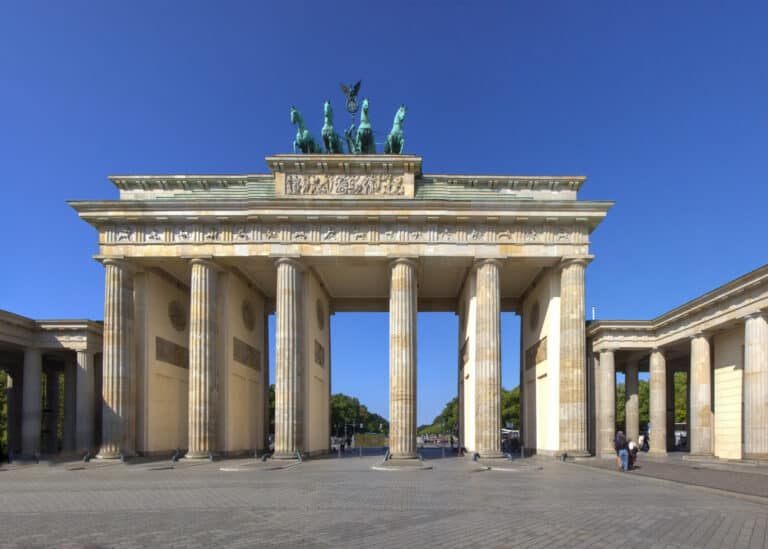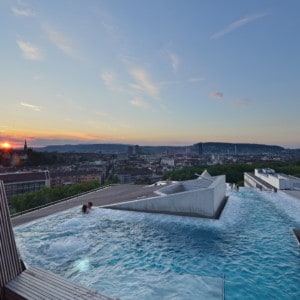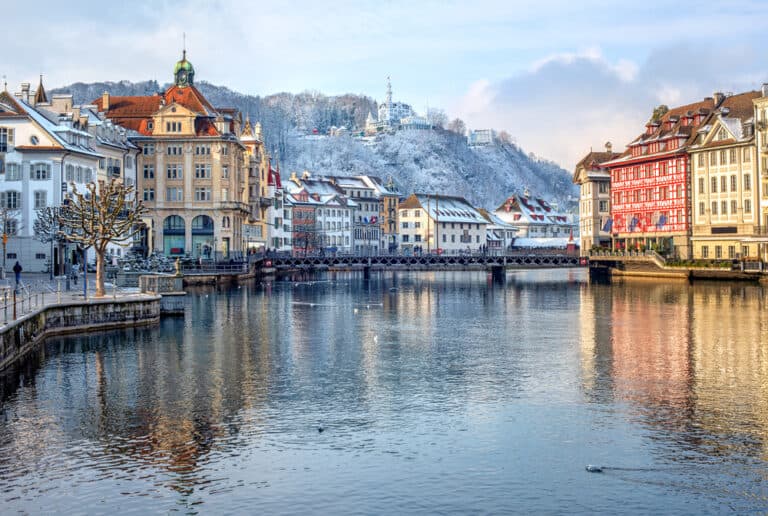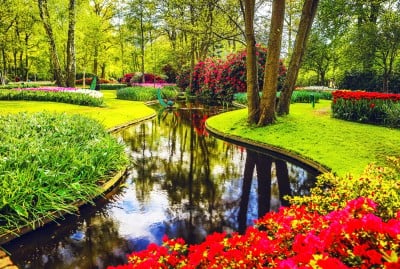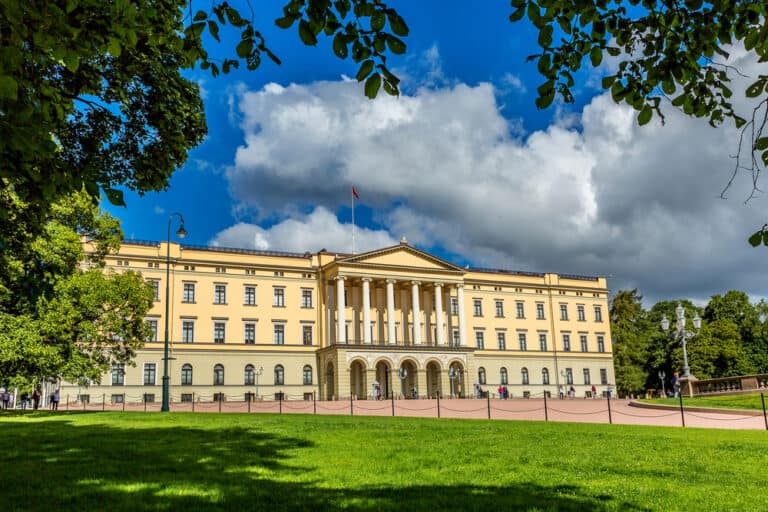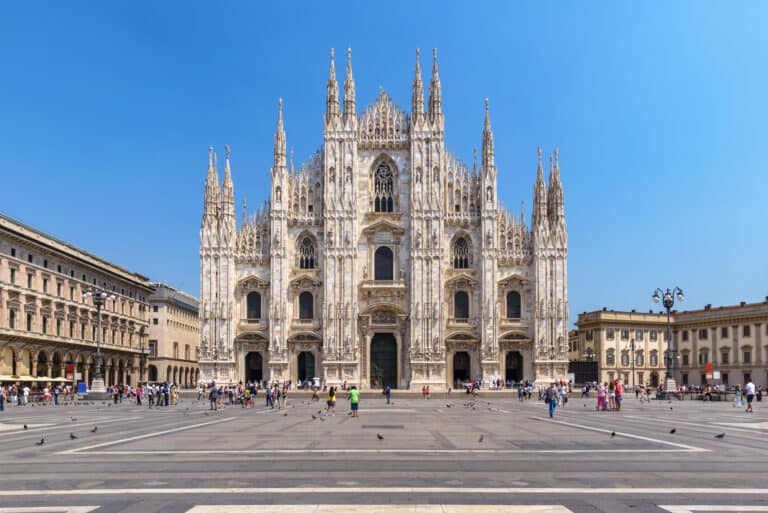Visiting Versailles: A day trip to Versailles from Paris (2022)

The Palace of Versailles is a grand royal palace near Paris, France. A UNESCO World Heritage site, it is a massive residence (there are 2,300 rooms here!) with beautiful gardens set in extensive grounds that span over 63,000 square metres.
It’s only around 12 miles from the French capital, so is easy to do as a day trip from Paris. If you want to glimpse the grandeur and opulence of how the French royalty lived, this is the place to go.
It’s one of the best day trips from Paris if you’re on a short trip here. So much so that 15 million people make their way here every year.
This is your guide to a day trip to Versailles from Paris. Below you will find information on the history of Versailles, the must-sees, as well as practical information on how to get there from Paris, how to buy tickets, and the best time to visit.
This post contains affiliate links
How to get to Versailles from Paris
There are several ways to reach Versailles.
By car
You can drive to the palace from Paris. The time this will take will obviously depend on your starting point in the capital and the traffic on the roads on the day you visit.
As with any large city, this may add time to your journey and mean that the time taken to get to the palace is overly long. The easiest way may therefore be to visit by public transport or to book a guided tour.
If you do drive to Versailles, there is a car park for visitors’ use.
By train
There are three train stations that you can travel to for the palace: Versailles Chateau Rive Gauche, Versailles Rive Droite, and Versailles Chantiers.
The nearest is the Versaille Chateau Rive Gauche train station, just a ten-minute walk away. The RER C line from central Paris will take you directly to this station in just 40 minutes. This website provides detailed information on this train journey and helpful information on how to buy a train ticket at Paris train stations.
Via an organised tour
Organised tours will also take you out to Versailles. These are a great option if you want the benefit of a tour guide who can tell you all about the history of the place and make sure you don’t miss the important parts.
This day tour includes the round trip from Paris, skip-the-line tickets to the palace and gardens, and the services of a tour guide.
You can explore other tours here.
About the Palace of Versailles
The Palace of Versailles – or Château de Versailles – was the home to a succession of French kings from Louis XIII to Louis XVI, France’s last king at the time of the French Revolution in the late 1800s.
Louis XIII originally built the palace in the 1620s as a hunting lodge but then rebuilt it in the early 1630s to become a castle. The King’s son, Louis XIV (also known as the Sun King), then extended the palace and made it into a grander and more opulent residence.

This included the creation of the famous Hall of Mirrors, where he could entertain and hold state ceremonies. He also oversaw renovation of the gardens and the creation of the Grand Canal under the instruction of French architect André le Nôtre. The estate of Trianon also started developing and the Grand Trianon Palace was built.
The palace then became the seat of government in 1682.

After Louis XIV died in 1715, Versailles went into abeyance until the early 1720s, when Louis XV started visiting again. More renovations took place that included the addition of the Petit Trianon Palace and the Royal Opera theatre.
Louis XVI assumed the throne in 1774 upon his father’s death and devoted most of his time to the palace. There were then more renovations, some of which were designed to provide more private space for the French royalty to retreat to. This included the Queen’s Hamlet for his wife, Marie-Antionette.
The couple spent time here until the French Revolution forced them to return to Paris. Louis was executed by guillotine in early 1793; Marie-Antionette was guillotined a few months later.
Versailles then became an art museum and was later restored to be in keeping with its days as a royal residence.
Tickets for the Palace of Versailles
You can buy skip-the-line tickets for Versailles Palace here.
The entrance fee includes the royal palace and gardens, and means you avoid long lines at the ticket office that can sometimes be the case during the peak season.
If you want to also include a visit to the estate of Trianon, this ticket covers this.
There is free admission for anyone under 18 (or under 26 if you live in the EU). It is also free to wander around Versailles gardens, except when they host shows in them.
Note that you must book a time slot in advance if you want to go inside the palace.
You can also access the palace as part of sightseeing day tours from Paris. These will take you on a tour of Versailles, fill you in on this part of French history, and show you the most significant parts of the estate.
Things to see on a day trip to Versailles from Paris
There’s a lot to see when you’re visiting Versailles, and the term ‘estate’ is the right one to use: there’s the actual palace, the Trianon Estate, the gardens, the park, as well as other parts that include the Royal Stables.
So make sure you leave enough time to see everything you’re interested in, especially if it’s your first time.
Below I have listed the key things that you should see on a visit.
The Hall of Mirrors
The most famous room – and one of the most impressive rooms in the main palace – is the Hall of Mirrors. It’s not to be missed when you visit and is a perfect glimpse into the opulent palace that the royal family lived in.
The hall – designed by Jules Hardouin-Mansart – is over 70 metres long and is lined on one side with arched windows that look out onto the gardens. Opposite are 17 arches with over 350 mirrors embedded into them. Ornate chandeliers hang from the painted vaulted ceiling.

The room was usually a means to get to other rooms in the palace, but it would occasionally be used for special celebrations or royal weddings. Famously, it was where, in 1919, the Treaty of Versailles was signed, officially ending World War I.
I can’t emphasise enough that you should make sure you go into the Hall of Mirrors when you’re visiting Versailles. It’s stunning.
The King’s state apartments
The King’s state apartments comprise seven rooms – several that are named after planets – that make up the ‘parade apartment’. All are ornately decorated with grand frescoes, ceilings, and fireplaces.
Among these is the Mercury Room, originally a bedchamber, although later a games room. The bed is here, underneath a painting of Mercury on a chariot on the ceiling.
The Apollo Room, a ceremonial throne room, has dark red walls and a painting of King Louis XIV above the fireplace. You can also see the Room of Abundance, where refreshments were served in the evening and the Hercules Room and Royal Chapel.
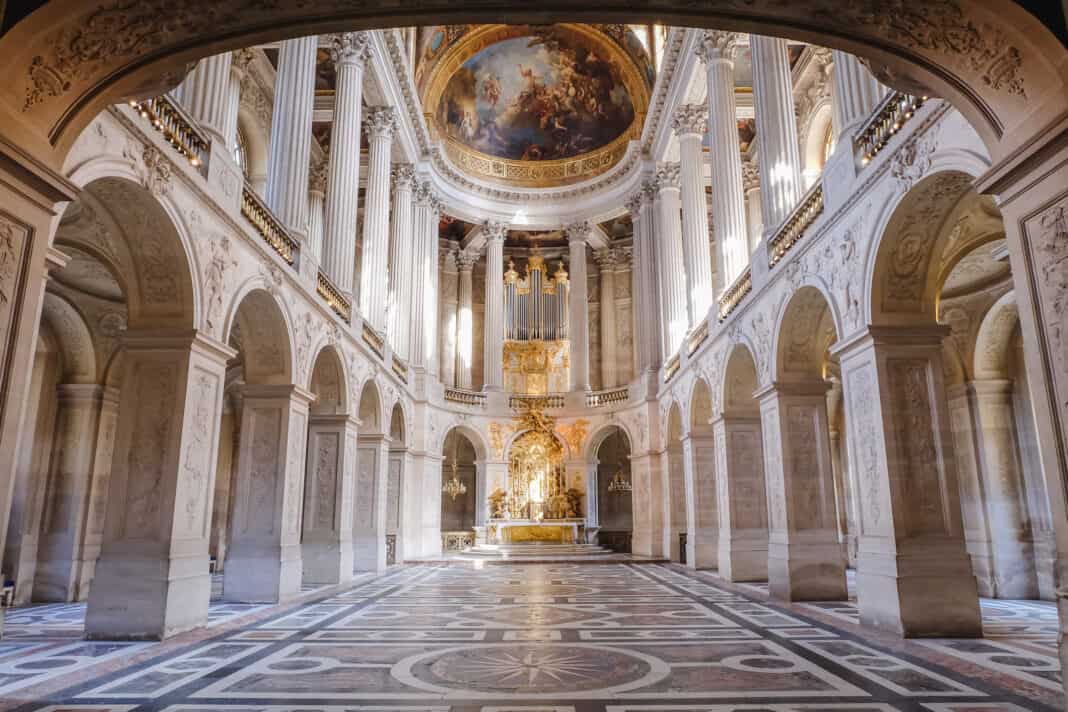
The King’s apartments
Although the King’s apartments are generally less opulent than the state apartments, they are nonetheless worth seeing. Unsurprisingly, the plainest is the room where the guards stayed to protect the king.
There are then two antechambers and the King’s Chamber, where the king slept and ate. It was in this room that Louis XIV died in 1715.
Beyond these apartments are the King’s Private Apartments. These are the apartments that the King used for his personal use and to showcase the art he owned. Note that you can only go into private apartments via a guided tour which takes place at 10 am every day. See the website for more details.
The Queen’s apartments
The Queen’s apartments mirror the King’s state apartments in layout. They are just as opulent as the King’s state apartments and contain many of the same features. There is a guard room, antechamber, and a bedchamber.
The bedchamber is particularly ornate and dazzling, with gold and silver walls, ceiling, and chandeliers.
In addition to these sections of the Palace, you can also visit other apartments and rooms, including Louis XV’s Daughters’ Apartments, The Dauphin and Dauphine’s Apartments, Madame Pompadour’s Apartments, the Gallery of the Great Battles and the Coronation Room. Again, some of these require pre-booking a tour during your visit, so check the website in advance.
The gardens of Versailles
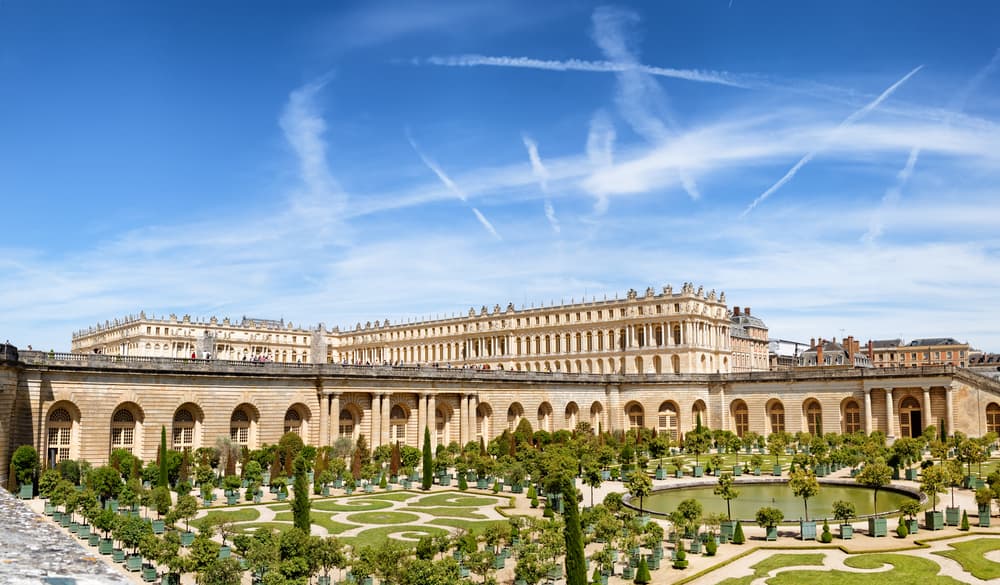
While a day trip to Versailles from Paris is definitely about seeing the actual palace, you’re not going to want to leave without seeing the stunning gardens. They cover a large area and are some of the most beautiful in the world.
There are a series of formal gardens and lawns (parterres) with ponds and fountains. Near the palace, there is an orangery. As you walk around, look out for the fountains and statues that are dotted all around the gardens.
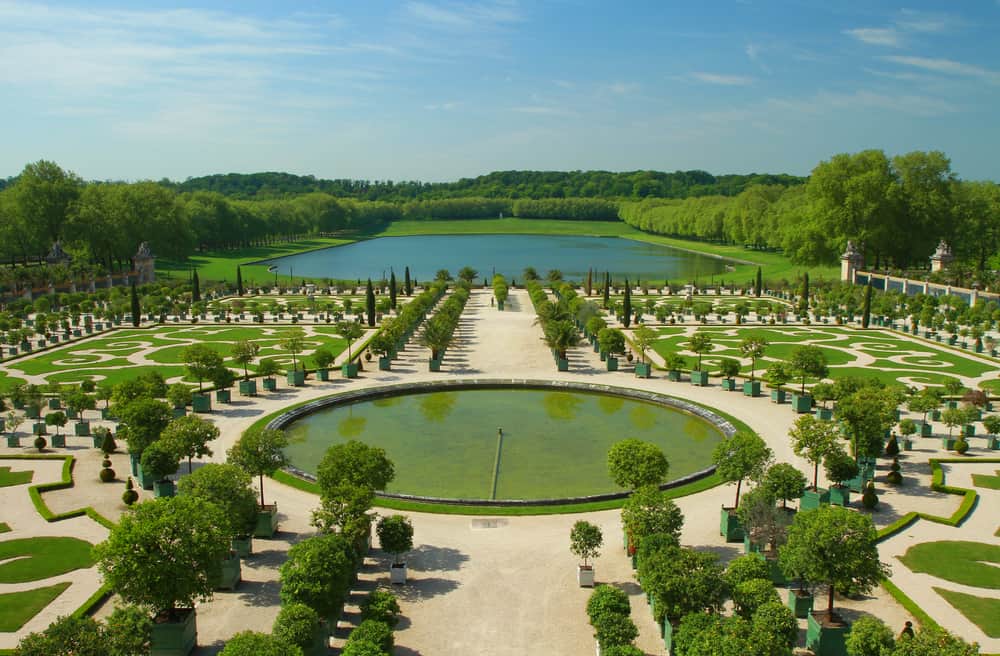
Pathways lead up to small wooded groves. There were once 15 of these, but currently there are 13 you can walk around.
Among these is the Queen’s Grove, which once contained 39 fountains representing animals from Aesop’s Fables but has since been replaced by a Virginia tulip tree. The Groves of the Domes has a hexagonal pool in a small amphitheatre, whereas the Obelisk Grove is more open, with a fountain spurting into the air.
There is also the Water Theatre Grove designed as an open-air venue for fountain shows.

The Musical Fountains Shows and Musical Gardens
During the summer months, parts of the gardens have music playing throughout them. Visiting Versailles at this time is popular, and it’s a lovely way to see the gardens.
The Musical Fountains Show takes place at weekends. You can walk around the gardens to the sound of baroque music and see the fountains alive and spouting water high up into the air.
On selected days, you can also buy tickets to visit at night and see the gardens lit up by lasers and fireworks.
The Musical Gardens – whereby music is played in the French Garden – are also open for visitors on specified days between April and October.
The Trianon Estate

The Palace of Versailles also includes the Estate of Trianon, itself set among beautiful gardens. This is the more private part of the estate, the place where the royal family used to head to, to get away from the more formal part of their royal lives.
There are two smaller palaces here – the Grand Trianon and Petit Trianon – as well as the Queen’s Hamlet.
The Queen’s Hamlet is a small rustic village built for Marie-Antoinette in the 1780s by the side of a lake. It has 10 buildings, including the Queen’s House, the Guard’s House, and a working dairy and windmill.
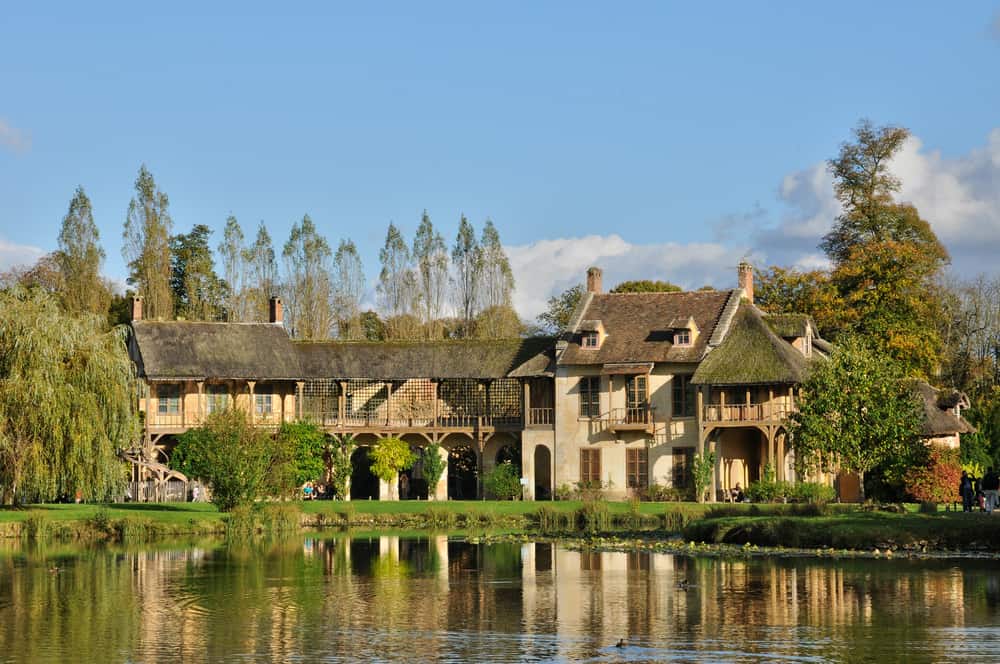
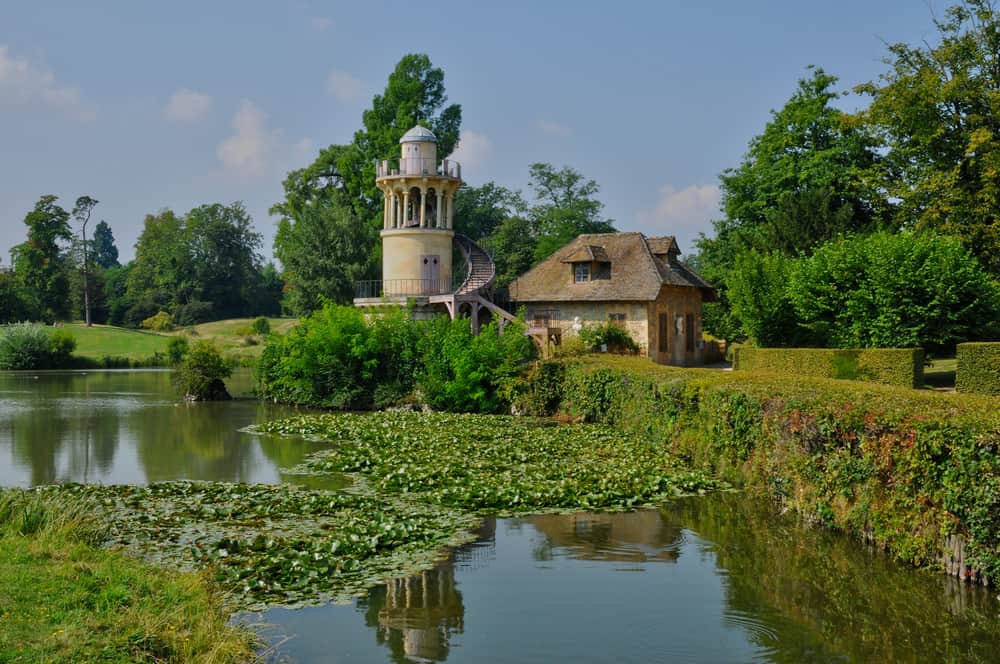
There is also the Queen’s Theatre on the estate, commissioned by Marie-Antionette in the late 18th century.
If you have time, try to see some of the Trianon estate. But if you want to do this when you’re visiting Versailles, remember to buy a ticket that includes this part.
The park
Versailles’ gardens lead into a vast park covering around 800 hectares. If you fancy getting some exercise during your day out, plenty can be had here! If you want to walk around the park, build in plenty of free time on your day out.
Alternatively, you can book a seat on the Little Train that runs around the estate or hire a bike here. There are also small electric golf cart type vehicles that you can hire to drive around in.
Connecting onto the lawned Royal Way is the Grand Canal, a long stretch of water over 1,600 metres long and surrounded by woodland. Between March and mid-November, you can hire boats and row along the canal.
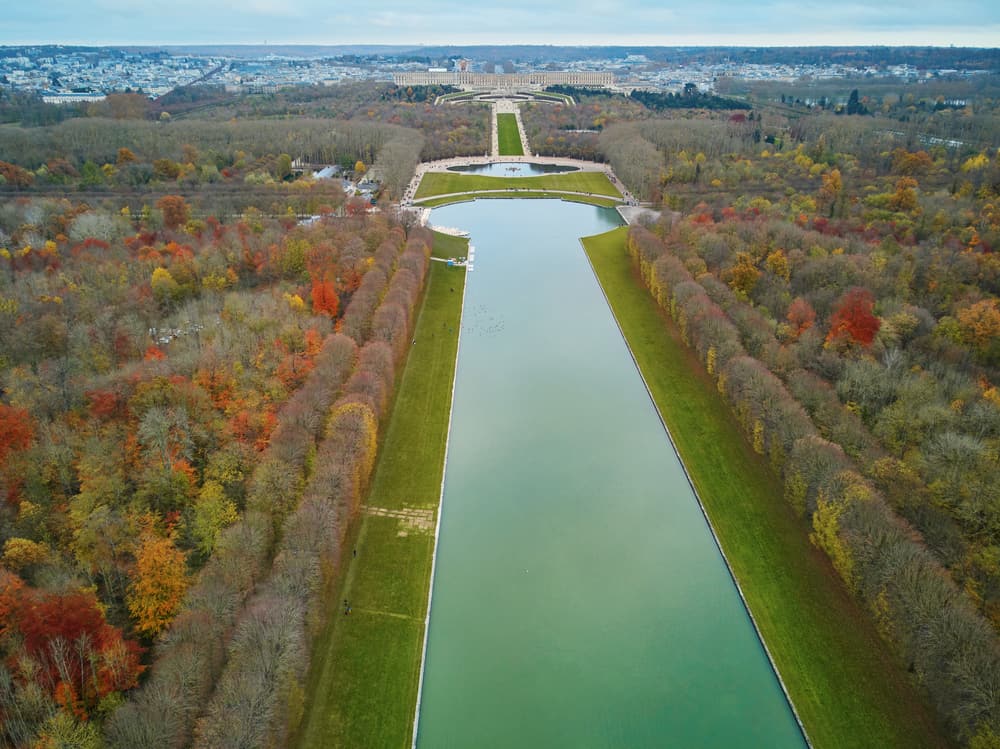
The Royal Stables
Opposite the palace are the Royal Stables, comprising the Great Stables and the Small Stables. These are said to be “the greatest royal construction project for housing horses ever undertaken”. They were put in place by Louis XIV and employed nearly 1,500 people at the time.
Contrary to what you might think, the stables are the same size. The title of Grand Stables merely refers to the fact that the King’s horses were housed there.
The Grand Stables now has the Gallery of Coaches (open on Saturday and Sunday afternoons). In the Small Stables, there is the Sculpture and Mouldings Gallery.
How to explore the Palace of Versailles
As you can see, there are many parts of Versailles. You should therefore factor in how much time you want to spend here, what parts you want to see and how you want to explore the palace and its attractions.
If you want to make sure you don’t miss the main parts, and also want the services of an experienced guide to fill you in on the history of the estate, then booking a Versailles tour with an expert guide might be the best way.
Some tours also include the return trip to and from Paris.
You can also pay for an audio guide if you visit independently. This comes in 12 different languages, and given the scale of the place is something that I’d recommend spending that little bit extra on.
To avoid this extra cost, you can access it free via the palace’s mobile app if you prefer.
If time is tight, but you want to see everything, you can hire bikes or golf carts to take you around the grounds or ride the Little Train to save you time.
The best time to visit Versailles
The Palace of Versailles and Trianon Estate with its Trianon Palaces are both open for visitors every day except Mondays.
Note that although the palace opens in the morning at 9 am, the Trianon Estate opens later, at noon. So, if you want to see both and are cramming in other things on the same day, make sure you stay until early afternoon or visit later in the day.
The gardens and park are open every day from 8 am until 6 pm.
Should you want to avoid the crowds and have a more peaceful visit, go between Wednesday and Friday. The palace is not open on Mondays and the website warns that it can get very busy on Tuesdays and weekends, especially in peak season (April to October).
Despite peak season being very busy, you may wish to visit during this time. The gardens are in bloom and are absolutely beautiful. And depending on the day that you visit, there is the chance of timing this with one of the musical shows or special events in the gardens.
If you do visit during high season, consider buying skip-the-line tickets to avoid the long queues.
Other ideas for short breaks in France and Europe
A day trip to Versailles from Paris is a wonderful day out. Other places to visit when you’re in Paris include the Loire Valley with its wonderful castles and wine. I have recently written about a day trip from Paris to the Loire Valley which will help you plan a trip here.
Lyon, famous for its gastronomy is also only around 2 hours away by train. This makes a great short break. I spent two days here a couple of years ago and had a great time. See my post for things to do on a short break in Lyon.
Further south, on the Cote D’Azur, is the small town of Menton, close to the Italian border. This is one of the 11 best days trips from Nice that you can take. It also has a quirky festival early in the year with statues made from the local oranges and lemons!
For other short breaks in Europe, see my website.


